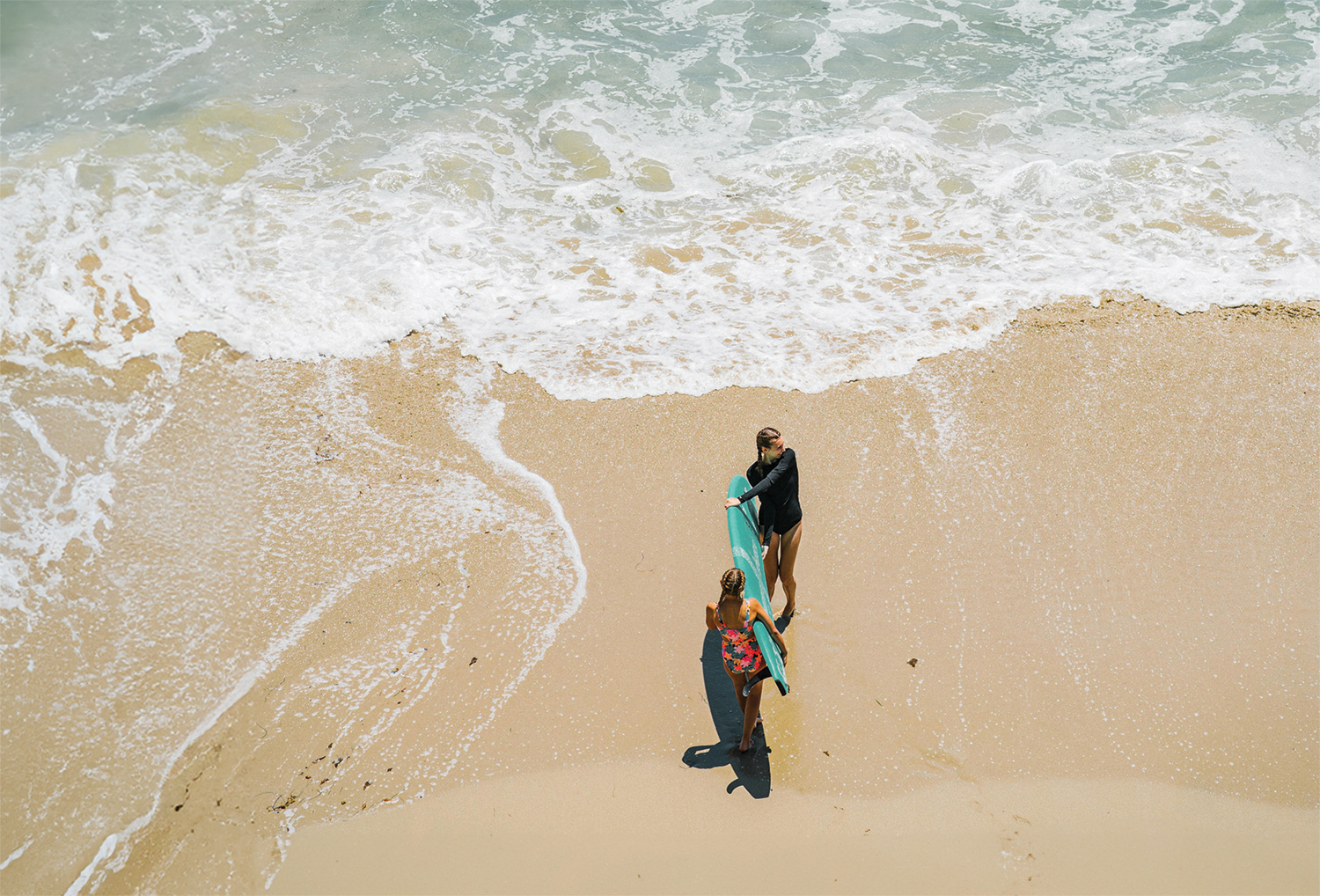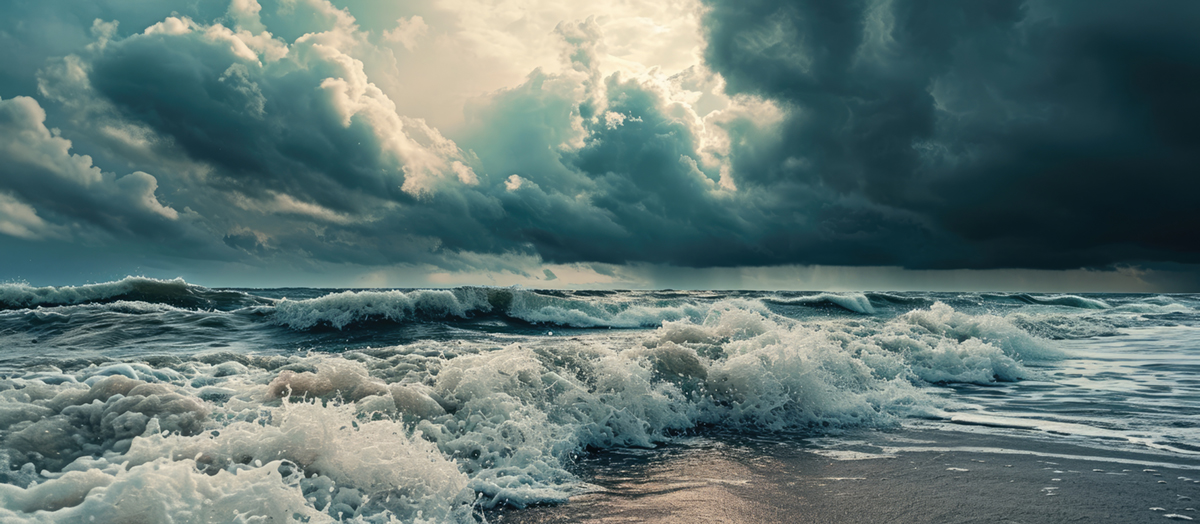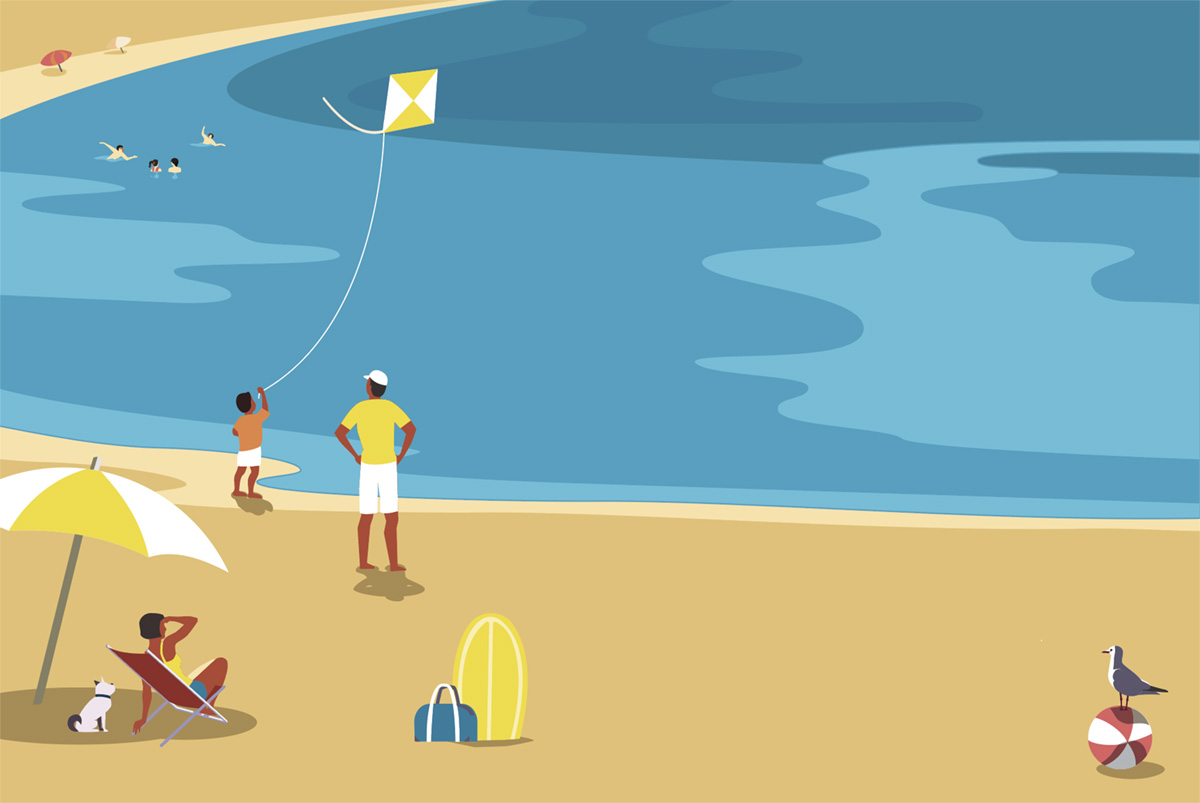Rip currents are like the no-see-ums of the surf zone, except they are much more deadly! Rip currents can occur at any beach that has breaking waves. They are channels of fast-moving water that flow away from shore.
Typically, rip currents form when incoming waves pile up water at the shoreline and then the water looks for the easiest route to exit back out to sea. This is often at a break in a sandbar. As it exits the break in the sandbar, it fans out and gradually loses its speed and strength.
Rip currents can also form near jetties, piers, and groins – popular spots for surfers, children, and recreational fisherman. So “break the grip of the rip” by heeding these tips!
Some tell-tale signs of rip currents are:
- A narrow gap of darker, calmer water between breaking waves
- A band of seaweed, foam, or muddy-looking water being pulled offshore
- A channel of choppy water that is distinct from the waters surrounding it
- Water that is noticeably different in color than the water nearby
Always ask a lifeguard if you are ever in doubt. If you end up caught in a rip current, stay calm and swim out of the rip current in a direction that is parallel to shore. If you cannot manage to leave the current, calmly tread water until the current relaxes and then swim to shore. Draw the attention of lifeguards by waving your arms. Remember, Delaware’s lifeguards are among the best in the country – always swim at beaches that are guarded!
Danielle Swallow, Coastal Hazards Specialist, is a certified climate change professional with Delaware Sea Grant (www.deseagrant.org). Delaware Sea Grant utilizes research, education, and extension work in support of resilient communities, economies, and coastal resources. Danielle provides technical assistance and outreach to communities on emergency preparedness and building resilience to weather and climate hazards. She is co-founder of the Resilient and Sustainable Communities League (RASCL – www.derascl.org) and loves hiking the Gordons Pond Trail in Cape Henlopen State Park.















